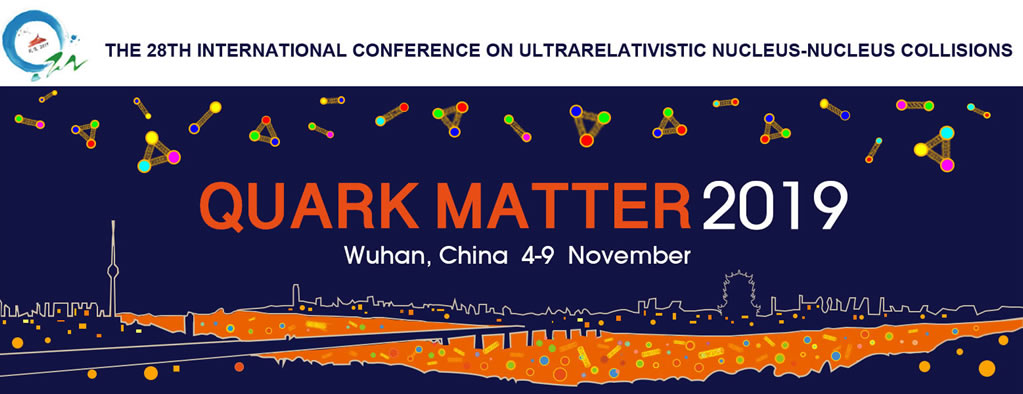Speaker
Description
Heavy quarks are unique tools to investigate the properties of the Quark-Gluon Plasma (QGP) formed in ultra-relativistic heavy-ion collisions. Due to the large masses, heavy quarks
are produced in hard scattering processes on timescales shorter than the QGP formation time, thus they experience the entire evolution of the medium interacting with its constituents.
The hot QCD matter is produced within an unprecedented strong magnetic field, which properties and effects can be probed by charm quarks via investigating the charm-particle
directed flow $v_{1}$, because the charm quark formation time scale is comparable to the time scale when the magnetic field attains its maximum value. The charm interaction with the medium constituents and its degree of thermalisation can be investigated via the measurement of the second coefficient of the D-meson azimuthal anisotropy, the elliptic flow $v_{2}$, that allows one to study whether low-momentum charm quarks participate in the collective expansion of the system.
Furthermore, the role of the recombination mechanism
can be studied for charm via the comparison of non-strange D meson $v_{\rm 2}$ with the $\rm D_s$ meson $v_{\rm 2}$. The dynamics of heavy quarks in the QGP can be further
investigated through the Event Shape Engineering (ESE) analysis. Measuring the D-meson $v_{2}$ in classes of events defined on the basis of the average flow in a given centrality class allows to evaluate the correlation between the elliptic flow of soft hadrons and D mesons.
The interest in heavy-flavour measurements in small systems, like p-Pb and pp, have been for a long time limited to the possibility of providing tests of perturbative QCD, measurements of cold-matter effects in the nuclear medium, and the baseline for observations of hot-medium effects in heavy-ion collisions. However, such measurements have recently gained additional interest due to the possibility of observing final-state like effects typically attributed, in Pb-Pb collisions, to the presence of QGP. The orgin of such effects
is still debated. In this contribution, the measurement of the ${\rm D}^{0}$ $v_{1}$ together with strange and non-strange D meson $v_{2}$ and the $v_{2}$ ESE analysis in Pb-Pb collisions at $\sqrt{s_{\rm NN}}=5.02$ TeV will be presented. The comparison with predictions from theoretical models will be extensively discussed.New measurements on production cross sections and nuclear modification factors of fully-reconstructed charmed mesons and of leptons from heavy-flavour hadron decays in pp and p-Pb collisions at various
energies will be presented with focus on their dependence on the charged-particle multiplicity.Finally, recent results on the study of azimuthal anisotropy of open heavy-flavour decay electrons and muons in p-Pb collisions will be discussed.
